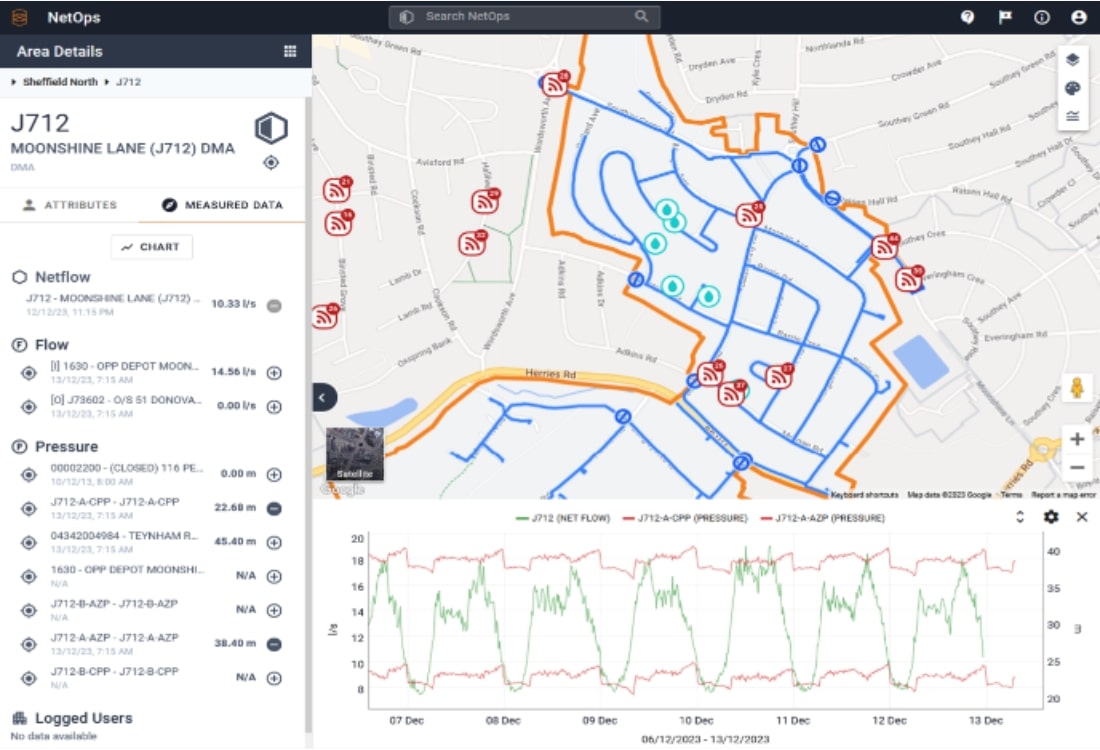5 Key Features of NetOps to Benefit Your Water Operations

Water utilities face immense pressure to reduce leakage and improve network efficiency to reduce losses, deliver better returns for shareholders, and improve the standard of service for consumers. State-of-the-art technological solutions, such as NetOps, are transforming how water companies manage their distribution networks by providing new capabilities that directly benefit their network operations teams.
What is NetOps?
NetOps is our comprehensive web-based desktop and mobile network operations tool that revolutionises water management by amalgamating crucial data and streamlining operational workflows. It gives operators greater control over the water network by allowing them to explore and view it spatially, access area attributes, and monitor sensor data. Additional process-driven modules provide office and field-based teams with tools to collaborate more effectively in resolving leakage issues, both upstream and downstream, and optimising the water supply to enhance service delivery. NetOps is a crucial tool in gathering on-site feedback, including recording leaks and Points of Interest, monitoring activity progress, and assessing operational performance.
How NetOps Can Improve Your Water Operations
So, what are the key features of NetOps, and how can it enhance your company’s water operations?
1. Improved Water Network Visibility
NetOps consolidates key data sources, such as GIS, smart meters, repairs, flow, pressure and alarms, into a single interface for faster and easier insights into the status of the water network. This enables teams to visualise the live network and better understand its performance, allowing for more informed decision-making. NetOps can also be enriched with third-party systems data to provide more detailed insights into network performance and leakage.
2. Standardised Workflow for Effective Management
NetOps establishes an end-to-end standardised workflow for leakage detection, encompassing prioritisation, planning, scheduling, resource assignments, and mobile device integration. This iterative cycle supports effective District Metered Area (DMA) leakage detection, ensuring a streamlined and efficient process.
3. Detailed Activity Planning and Design
Leakage analysts can create precise network activities, assigning tasks such as noise logging, pipe correlation, and acoustic surveys to technicians via NetOps. Seamless integration with work management systems share relevant information with the enterprise resource planning platform, enhancing operational efficiency.
4. Mobile Knowledge Transfer and Feedback
NetOps equips detection technicians with detailed network information and instructions via the mobile app. Technicians can record observations, leaks detected, asset details, and time spent on activities. Offline access to relevant data ensures work continuity in areas with poor signal strength and supports the capture of invaluable feedback and learning.
5. Extensive Performance Monitoring
NetOps dashboards showcase live progress of activities, repairs, and associated leakage reduction. KPI dashboards track efficiency and effectiveness aligned to regulatory or contractual reduction targets, enabling data-driven decision-making and performance optimisation.
Find Out More About NetOps
To find out more about the NetOps Smart Water Network Application and how it could benefit your water company, please get in touch with Crowder Consulting today.

